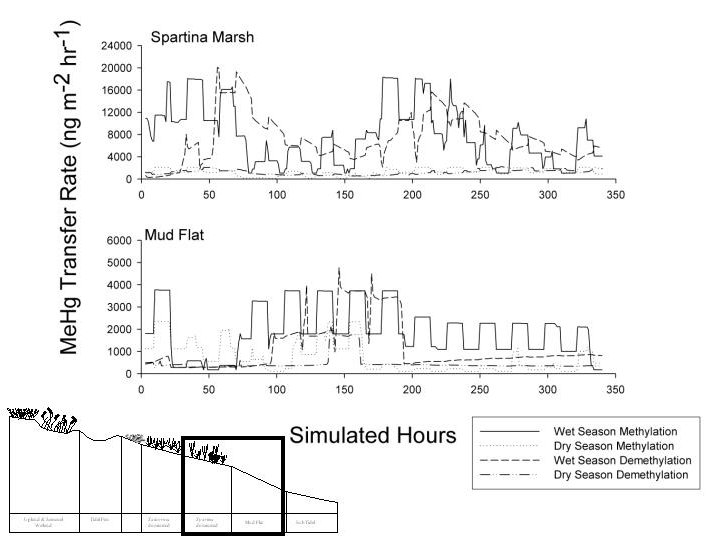QnD: ARAMS – Integration with a risk model for exploring ecosystem effects
ARAMS, an adaptable risk assessment modeling system was developed by the US Army Corps of Engineers to provide tools to perform human and ecologically based risk/hazard assessments. The objective of ARAMS was to provide a platform from which a variety of risk assessments can be performed, allowing users to visualize an assessment from source through multiple environmental media (groundwater, surface water, air, and land) to sensitive receptors of concern (e.g., humans and ecological endpoints).
The integration of the QnD model with risk assessment models was explored. The ARAMS model provides some of the inputs to QnD’s engine components such as the input time series, data values, and dose-response relationships. The QnD system expands the single contaminant-to-fish pathway simulated by the ARAMS model by providing a spatial area for multiple populations and additional simulated items that provides greater detail in fish responses to contaminant concentrations.
This ARAMS example calculates the percentage of time that an aquatic species is exposed to 1) acceptable impacts, 2) unacceptable impacts with less than 50 percent physiological effects, and 3) unacceptable impacts with equal to or greater than 50 percent physiological effects. The output also summarizes the probability of equaling or exceeding a concentration based on exposure duration.
QnD: HAAF – A Screening-Level Model Design for Integrating Physical, Chemical and Biological Processes that Drive Mercury and Methylmercury Cycling
 Stakeholders involved in wetland restoration activities on the former Hamilton Army Air Field (HAAF), located near San Francisco, California (USA), aimed at restoring San Pablo Bay wetland habitat, while minimizing conditions for methylmercury production and its subsequent trophic transfer to San Francisco Bay fisheries. However, sufficiently detailed information on environmental mercury levels at HAAF are lacking, as well as a mechanistic understanding of the factors that control these levels and the means to use this information in ecosystem models supporting environmental management decisions.
Stakeholders involved in wetland restoration activities on the former Hamilton Army Air Field (HAAF), located near San Francisco, California (USA), aimed at restoring San Pablo Bay wetland habitat, while minimizing conditions for methylmercury production and its subsequent trophic transfer to San Francisco Bay fisheries. However, sufficiently detailed information on environmental mercury levels at HAAF are lacking, as well as a mechanistic understanding of the factors that control these levels and the means to use this information in ecosystem models supporting environmental management decisions.
The purpose of the QnD application to the HAAF site (QnD:HAAF) was to integrate the field and laboratory data and facilitate the use of these data as a basis for screening-level predictions for (1) other coastal wetland sites, and (2) “scaling up” for landscape-scale simulations. QnD: HAAF was applied in an iterative, interactive manner to identify critical abiotic and biotic drivers of salt marsh mercury and methylmercury cycling and guide subsequent work on HAAF and San Francisco Bay salt marshes. As further learning occurs from subsequent studies, those ecosystem drivers that are shown to be important can be explored and subsequently expanded, those judged less important can be discarded. While these major structural changes would require substantial code rewriting of other models, these changes are made rapidly in QnD. QnD achieves modeling nimbleness by keeping compartments, processes and interactions conceptually simple. Thus, the QnD: HAAF system can serve as a capstone for integrating monitoring results into a more management-focused model.
The initial version of QnD: HAAF was focused on exploring consensus technical questions formulated at the past stakeholder-derived questions including:
1. What are the present levels of MeHg in San Francisco Bay wetlands with respect to biota and sub-habitats, and location within the Bay?
2. What are the rates of MeHg production?
3. What factors control MeHg production? Can these be managed?
4. Are some wetlands larger mercury exporters than others?
5. Can we model/predict the effects of wetland restoration on MeHg production and export?

